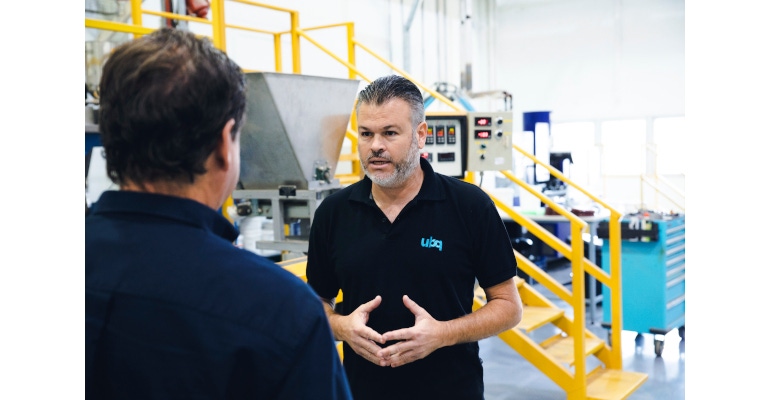The Waste-to-Materials Revolution: Paving the Way for a Greener Future
Here’s how design and manufacturing engineers can help drive sustainable manufacturing.

In the face of pressing environmental challenges and climate change, manufacturers need to embrace sustainability as a cornerstone of the production process. As one of the largest contributors to greenhouse gas emissions, waste generation, and resource depletion, the manufacturing sector bears a significant responsibility to mitigate its impact on the planet. Given that 80% of end products’ environmental impact is determined in the design stage, design engineers have a crucial role to play in spearheading positive change.
Manufacturers have been working to implement a variety of solutions to make operations more sustainable. These initiatives range from adopting cleaner and more-efficient technologies to implementing recycling and waste-reduction programs. Manufacturers have focused on optimizing energy usage, incorporating renewable energy sources, and reducing carbon emissions through process improvements. Some have also embraced a circular-economy approach, which emphasizes product longevity, reuse, and recycling.
But there are still significant challenges. While some manufacturers have made notable progress in implementing sustainable solutions, others have been slower to adopt these practices due to factors such as cost, limited awareness, or resistance to change. The complexity of global supply chains and the lack of harmonized regulations also pose challenges in achieving widespread sustainability in manufacturing. Overcoming these barriers requires a holistic approach that encompasses collaboration, innovation, and the involvement of diverse stakeholders.
The Waste-to-Materials Sector: Bridging Waste Management and Sustainable Manufacturing
Within this landscape, the waste-to-materials sector emerges as a crucial ally in driving sustainability in manufacturing. Waste-to-materials is the practice of converting waste into valuable resources, thereby reducing the need for virgin materials and minimizing waste sent to landfills. By employing advanced technologies such as recycling, composting, and upcycling, this sector transforms discarded materials into a new resource that can be reintroduced into the manufacturing process.
The waste-to-materials sector also allows manufacturing to move closer to a circular-economy model, where resources are conserved, waste is minimized and the overall environmental footprint is significantly reduced. This sector can be the bridge between waste management and sustainable manufacturing, offering innovative solutions to address the challenges associated with resource scarcity and waste generation.
The Challenge: Limits, Change, and Sustainability
Manufacturing engineers face inherent limitations and parameters that shape their work. These factors include costs, technology limitations, regulatory requirements, and customer demands. Balancing these considerations while striving for sustainability can be a complex challenge. Engineers must navigate within these boundaries to find innovative solutions that minimize environmental impact without compromising the functionality, quality, or affordability of products. It requires a delicate balance of creativity, expertise, and collaboration to overcome these limitations and push the boundaries of sustainable manufacturing.
Making significant changes in engineering and manufacturing practices is no small feat. Existing systems and processes are deeply ingrained, and introducing radical transformations requires overcoming resistance and inertia. Resistance to change can arise from multiple sources, including risk aversion, concerns about economic viability, and a lack of awareness or understanding of the benefits of sustainable practices. Overcoming these obstacles necessitates a comprehensive approach that involves education, awareness campaigns, incentives, and demonstration of successful case studies. By highlighting the tangible benefits of sustainable practices, engineers can help shift mindsets and drive the necessary changes in engineering and manufacturing.
Another significant challenge lies in the move toward using sustainable raw materials. Sustainable alternatives often face hurdles such as limited availability, higher costs, or unfamiliarity within the industry. For example, manufacturers and engineers may hesitate to adopt these materials due to concerns of performance, durability, or compatibility with existing production processes. Moreover, supply-chain complexities and the need for standardized certification further complicate the adoption of sustainable raw materials. Addressing these challenges requires collaboration among engineers, material scientists, suppliers, and industry stakeholders to develop and refine sustainable alternatives. By actively engaging with suppliers and exploring innovative material options, engineers can play a crucial role in overcoming resistance and driving the adoption of sustainable raw materials in manufacturing.
Embracing Sustainability: Keys to Successful Engineering and Manufacturing Transformation
A successful transformation toward sustainability requires a willingness from manufacturers and engineers to make necessary changes and embrace new approaches. Engineers play a pivotal role in driving this transformation by integrating sustainable practices into their processes.
This mindset shift involves recognizing the importance of environmental responsibility and the long-term benefits of sustainable manufacturing. Alongside willingness, adaptability is crucial for working with sustainable raw materials. Engineers must be open to exploring new options, adapting formulas, and refining production methods to ensure compatibility with sustainable inputs. This flexibility requires a continuous learning process, collaboration with suppliers and experts, and a commitment to improving manufacturing practices. This can give engineers an opportunity to unlock the full potential of sustainable materials and technologies, driving positive change within their industries.
To assist engineers in this transition, clean-tech and sustainable raw materials developers can provide additional education, support, and technical assistance to enable effective implementation.
The Changing Landscape of Manufacturing
The manufacturing industry faces two significant challenges: cost reduction and sustainability. These objectives often clash, creating a conflict between economic considerations and environmental impact. While cost reduction has traditionally taken precedence, the need for sustainability has shifted the landscape. Efforts are underway to discover sustainable materials and products for manufacturing, with researchers and innovators exploring alternatives that are both environmentally friendly and cost-effective.
In this pursuit, the waste-to-materials sector plays a crucial role in driving a sustainable transformation in manufacturing. Technologies like pyrolysis, gasification, and chemical recycling are being explored to convert waste materials into valuable resources. These advancements offer opportunities to reduce reliance on virgin materials and minimize landfill waste.
To implement these sustainable solutions, manufacturing and design engineers are essential. They possess the expertise to select sustainable materials, optimize processes, and design products with sustainability in mind. By actively incorporating sustainable materials and collaborating with waste-to-materials companies, engineers can reduce the environmental impact of manufacturing processes and drive positive change within the industry. This will drive the necessary change in standards and legislation, accelerating the adoption of waste-to-material solutions by the manufacturing sector and consumers.

Minding the Gap: Collaborating with Engineers to Achieve Sustainability Goals
It is crucial to speak the “same language” as engineers when approaching or discussing sustainable solutions, raw materials, and change. Sustainability professionals need to understand the technical aspects and challenges faced by engineers, while engineers need to grasp the environmental and societal considerations involved. By establishing effective communication and understanding, both parties can work together to identify sustainable alternatives and develop feasible solutions that meet the requirements of all stakeholders.
Demonstrating the feasibility of sustainability is another key aspect of collaboration. Sustainability advocates must provide evidence-based data and case studies that showcase the economic and environmental benefits of sustainable practices. By presenting real-world examples of successful implementations, engineers can gain confidence in the viability and effectiveness of sustainable approaches. Demonstrating feasibility helps to overcome skepticism and encourages engineers to embrace change and integrate sustainable solutions into their designs and manufacturing processes.
To help support this change, it’s essential to provide manufacturing and design engineers with the necessary tools and support. This can include access to sustainable design guidelines, databases of sustainable materials and technologies, and training programs on sustainable manufacturing practices. By equipping engineers with the knowledge and resources they need, they can effectively implement sustainable strategies and make informed decisions that align with sustainability goals.
Establishing support networks and forums for knowledge sharing also allows engineers to exchange insights, lessons learned, and best practices while also facilitating the integration of new materials with enhanced sustainability. Sharing both successes and failures is crucial to foster a culture of continuous learning and improvement, enabling engineers to collectively drive progress toward sustainable manufacturing.
Driving Sustainable Manufacturing: A Call for Collaborative Action
The future of manufacturing lies in embracing sustainable materials and practices. This is a critical shift that we must undertake now. Delaying action only makes implementing these changes harder for future generations as the climate crisis worsens. The sustainability sector and producers of sustainable raw materials play a vital role in offering support, guidance, and technical expertise to engineers and manufacturers. Simultaneously, standards and regulatory institutions, engineers, and manufacturers must demonstrate willingness to embrace change, foster creativity, and maintain an open-minded approach. Fortunately, we are already witnessing encouraging changes taking place.
We need to remember that sustainability is not about achieving perfection. It is about making choices that significantly reduce environmental impact. Small steps can make a significant difference. By placing sustainability at the forefront of manufacturing practices, we can contribute to shaping a greener and more sustainable future for future generations.
About the Author(s)
You May Also Like





